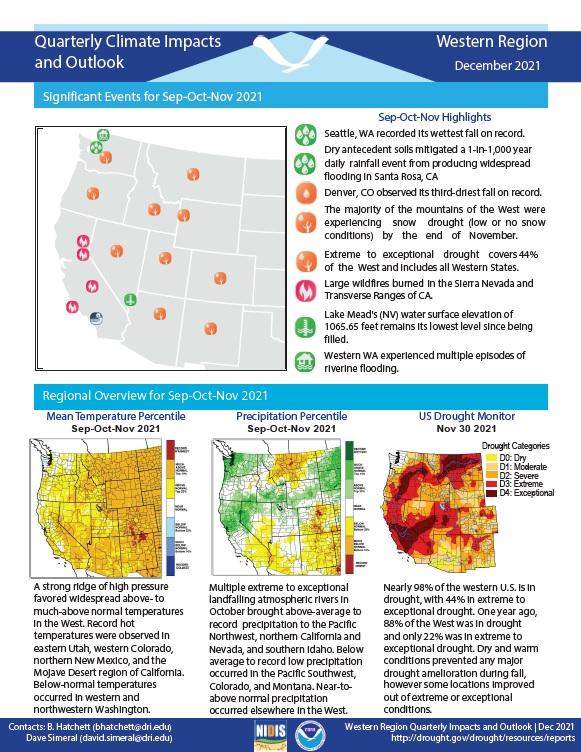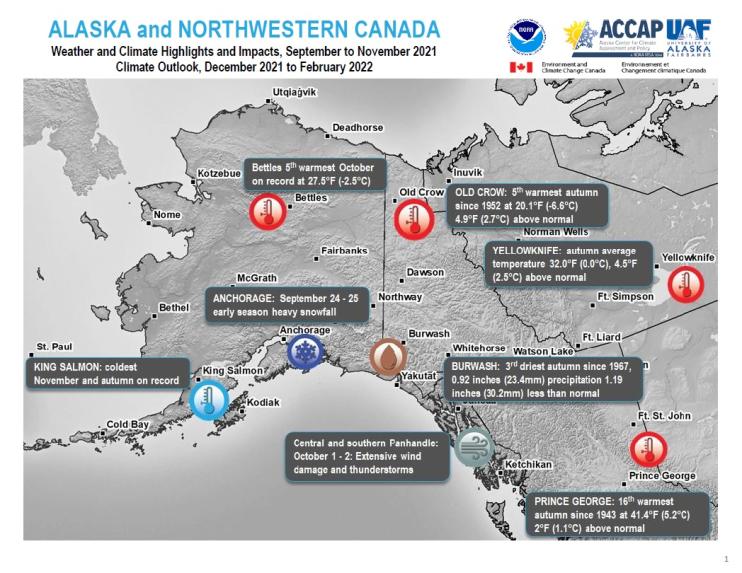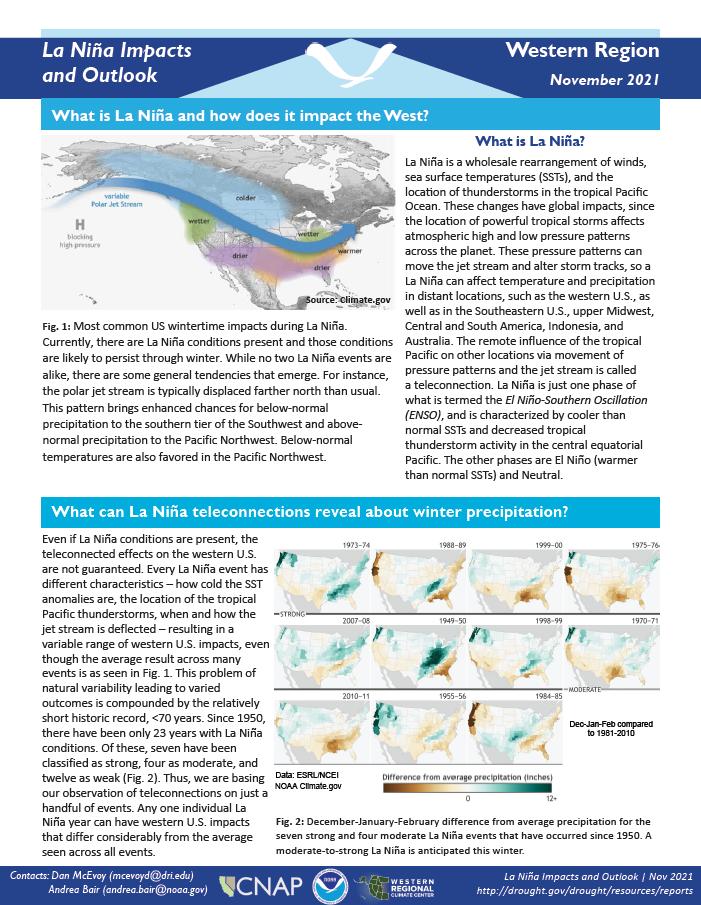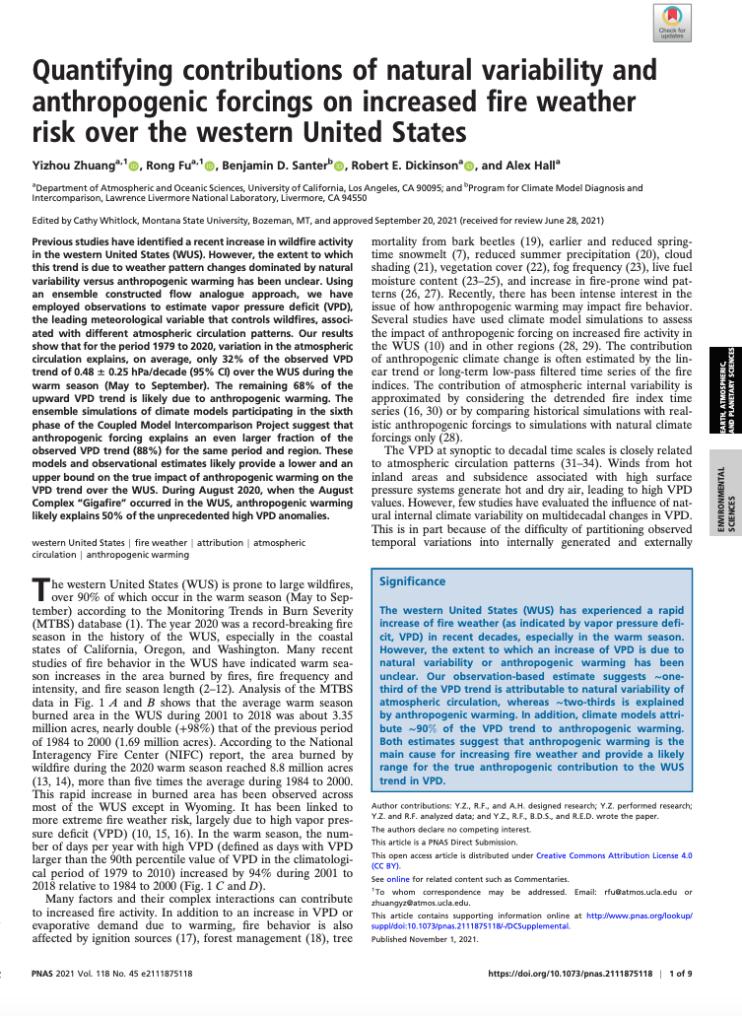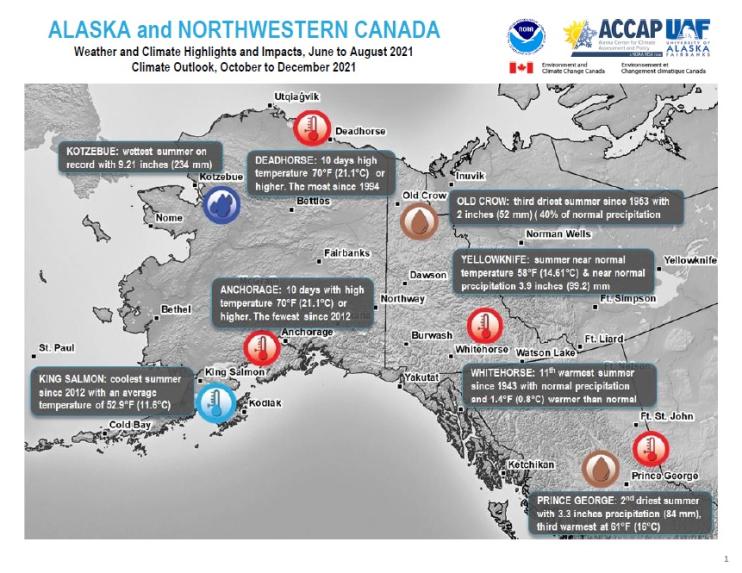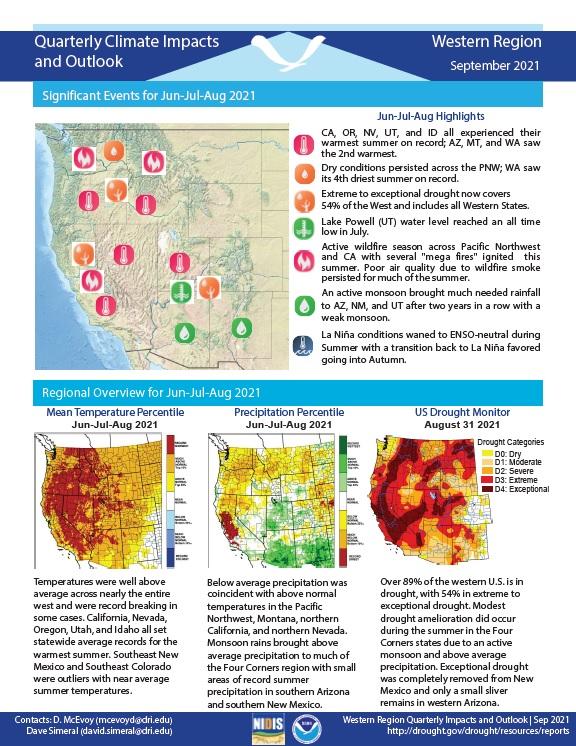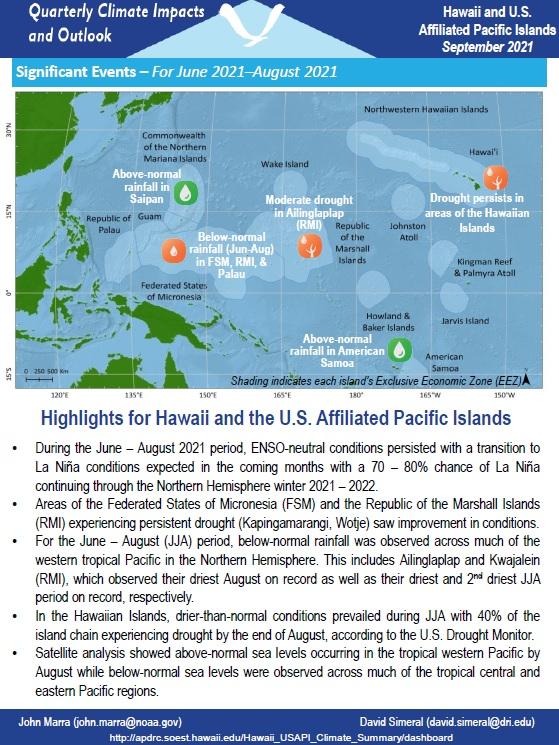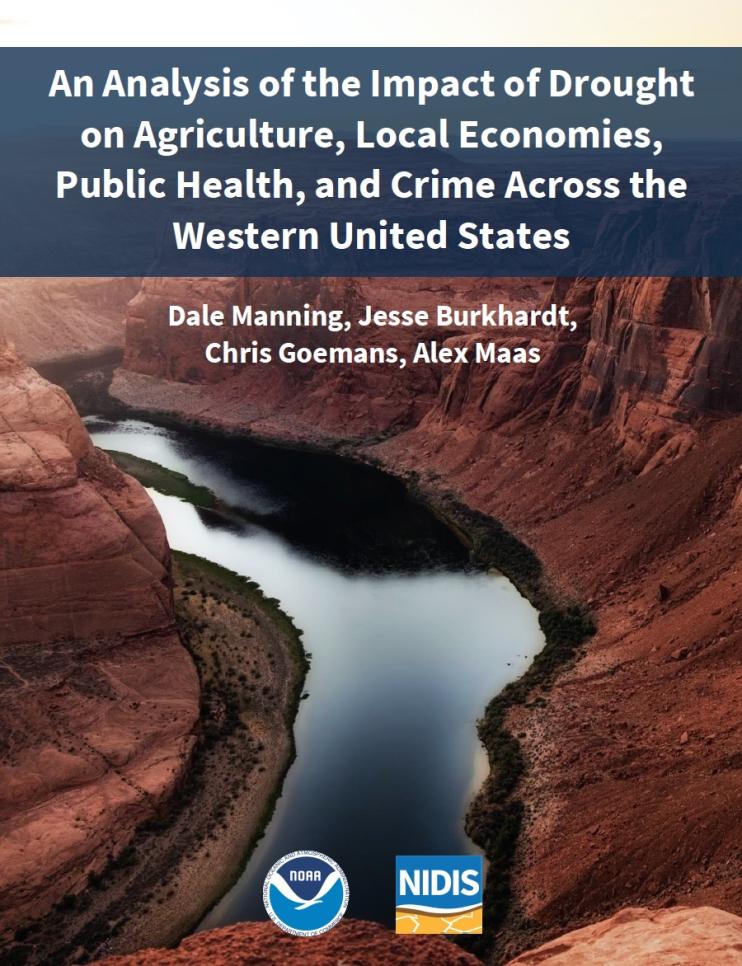Quarterly Climate Impacts and Outlook for the Western Region for September - November 2021. Dated December 2021.
Quarterly Climate Impacts and Outlook for Alaska and Northwestern Canada for September–November 2021, with an outlook for December 2021–February 2022. Dated December 2021.
During Autumn 2021, the southern and central regions of British Columbia were greatly impacted by extreme weather, whereas the Yukon was far less affected. Rainfall was slightly above average for most locations in Yukon except for Old Crow, where the rainfall of 2.1 inches (53.9 mm) was 79% of the total normal amount.
Quarterly Climate Impacts and Outlook for the Pacific Region for September - November 2021. Dated December 2021.
During October 2021, ENSO-neutral conditions transitioned to La Niña conditions, and by November all Niño regions had dipped below the -0.5ºC threshold. La Niña is expected to continue through the Northern Hemisphere winter (~95% chance) and transition to ENSO-neutral during Spring 2022 (~60% chance during April–June).
The National Weather Service Central Region developed 2021–2022 Winter Hazard Outlooks in coordination with NOAA's National Centers for Environmental Information and National Integrated Drought Information System (NIDIS); U.S. Department of Agriculture; High Plains Regional Climate Center; and National Interagency Fire Center's Geographic Area Coordination Centers. This outlook highlights the various Winter hazards that could occur and potential impacts across the Western U.S.
This summary provides information on the typical La Niña winter pattern; the La Niña outlook; potential impacts; and comparisons of conditions during previous La Niña years for the Western U.S., updated in November 2021.
NOAA’s Regional Climate Services Program created these outlooks to inform the public about climate impacts within their respective regions. Each regional report contains easy-to-understand language, and anyone can access them through the Drought Portal.
This article in the Proceedings of the National Academy of Sciences of the United States of America (PNAS) was the result of NIDIS-supported research. Learn more about this research.
Quarterly Climate Impacts and Outlook for Alaska and Northwestern Canada for June–August 2021, with an outlook for October–December 2021. Dated September 2021.
NOAA’s Regional Climate Services Program and partners created these Climate Outlooks to inform the public about recent climate impacts within their respective regions. Each regional report contains easy-to-understand language, and anyone can access them through the Drought Portal.
Quarterly Climate Impacts and Outlook for the Western Region for June - August 2021. Dated September 2021.
Temperatures were well above average across nearly the entire west and were record breaking in some cases. Over 89% of the western U.S. is in drought, with 54% in extreme to exceptional drought.
Quarterly Climate Impacts and Outlook for the Pacific Region for June - August 2021. Dated September 2021.
During the June–August 2021 period, ENSO-neutral conditions persisted with a transition to La Niña conditions expected in the coming months and a 70%–80% chance of La Niña continuing through the Northern Hemisphere winter 2021–2022.
Severe, extreme, or exceptional drought conditions have become increasingly common throughout the western United States over the past 20 years. Abnormally dry conditions can lead to a wide range of negative economic impacts across a wide range of sectors that either directly or indirectly depend on weather-dependent ecosystem services.


